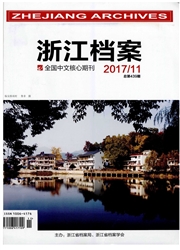

 中文摘要:
中文摘要:
清水江文书可以弥补目前缺少明代文献见证清水江历史的缺憾。文书中的地名是明代少数民族地区历史地理重要信息库,可分析了解清水江流域的沿革地理、政治与民族地理;文书又提供了许多苗侗民族社会、经济生活细节,并显示出其复杂生活方式,如土司属民、卫(所)屯军和国家编户民居民混杂相处;文书所涉及事务显示出的调解方式也相对复杂。文书反映出清水江少数民族地区是一个特别的二元社会。
 英文摘要:
英文摘要:
Qingshuijiang Documents can make up for the lack of Qingshuijiang history testified in the Ming Dynasty. The place names in the documents are important information databases for the by literatures historical geography in minority areas in the Ming Dynasty, which can help people to understand, through analysis, the evolution process in geography, politics and ethnic geography in Qingshuijiang Basin. The documents also provide many details about the social and economic life by the Miao and Dong groups and demonstrate the complexity in their life, such as the mixture of national households of the ethnic minority hereditary headmen, empire armies in military camps and the people and minority inhabitants registered by the government. The documents also show the complexity of the mediation for the affairs involved in the documents. The documents reflect that the minority areas in Qingshuijiang Basin are really a special dual society.
 同期刊论文项目
同期刊论文项目
 同项目期刊论文
同项目期刊论文
 期刊信息
期刊信息
